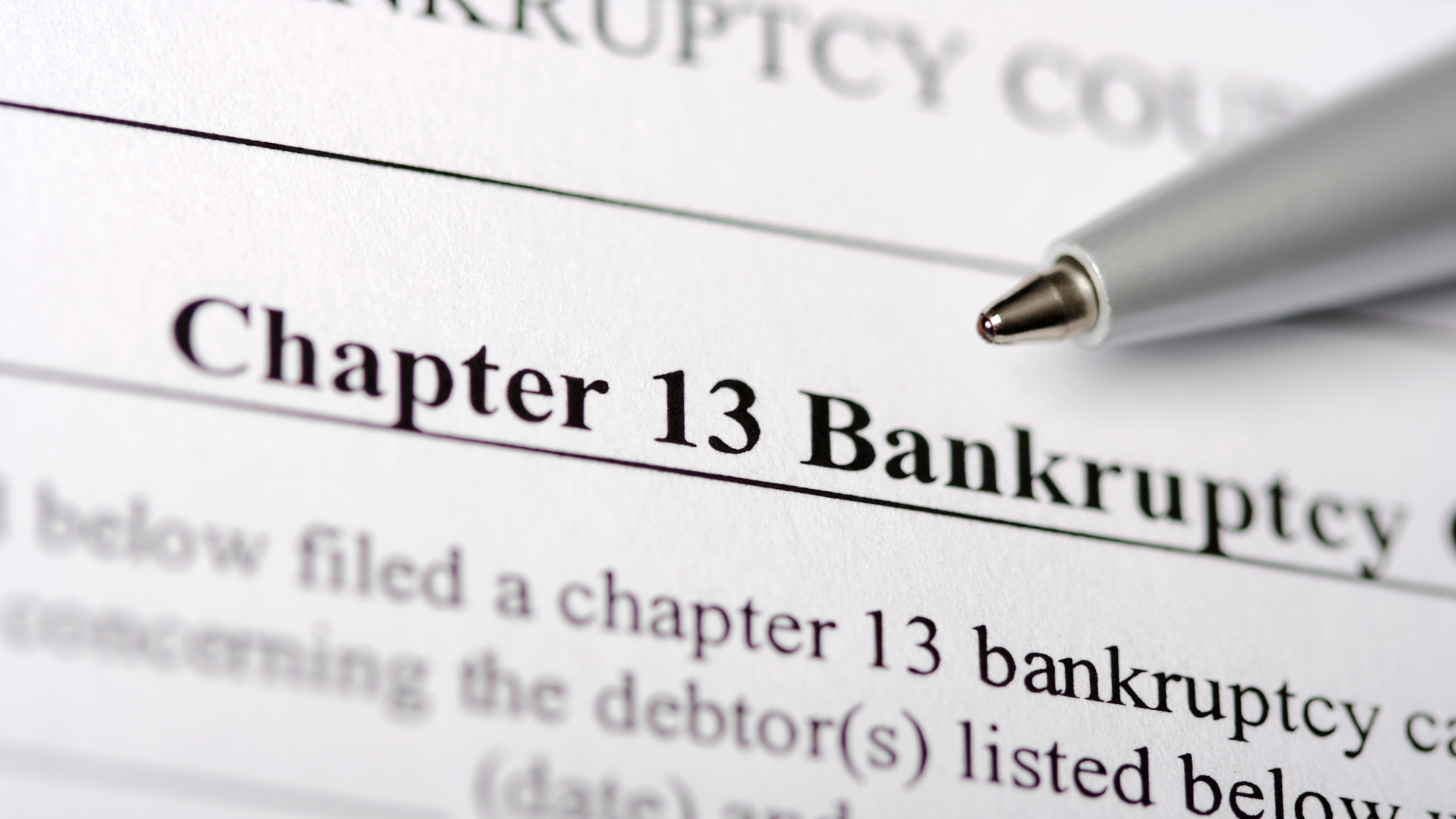Bankruptcy Law: Essential Case Law for Practitioners

Bankruptcy Law: Essential Case Law for Practitioners
Estimated reading time: 9 minutes
Bankruptcy law is essential for managing financial distress, impacting debtors, creditors, and the legal system. Understanding key bankruptcy cases provides crucial insights into procedural compliance, creditor protections, and debtor obligations. In this article, we explore significant bankruptcy cases, available online through Continuing Education of the Bar. These decisions reveal the dynamic interplay between legal principles and real-world applications.
Mullis v. U.S. Bankr. Court (1987)
Tom Neeley Mullis filed a civil rights action against four bankruptcy judges, the bankruptcy court clerk, two deputy clerks, and a bankruptcy trustee. The dispute stemmed from the treatment of his bankruptcy petition, which did not specify the chapter under which he was filing. The clerks filed it under Chapter 7, and Mullis later sought to withdraw his petition. The bankruptcy court denied his motion to dismiss, leading Mullis to allege violations of his constitutional rights. The district court dismissed his action, and the Ninth Circuit affirmed, holding that the bankruptcy judges, clerks, and trustee were protected by absolute judicial and quasi-judicial immunity from damages and injunctive relief.
Implications for Debtors, Creditors, and Bankruptcy Proceedings
This case underscores the robust protections judicial and quasi-judicial officers enjoy under the doctrines of judicial and quasi-judicial immunity. For debtors, it highlights the importance of understanding the specific requirements and implications of filing for bankruptcy, as errors or omissions can have significant procedural consequences. Creditors can be assured that bankruptcy proceedings are conducted under established legal protections, minimizing the risk of arbitrary decisions. For bankruptcy proceedings, the ruling reinforces the integrity of judicial actions, ensuring that decisions made in the course of judicial duties are safeguarded from civil suits, thereby promoting judicial efficiency and independence. This case emphasizes the need for procedural diligence and the limitations on seeking redress through civil rights actions in the context of bankruptcy adjudications.
In re Gruntz (1999)
In re Gruntz addressed two main issues: whether a state court’s modification of a bankruptcy automatic stay binds federal courts, and whether the automatic stay enjoins a criminal prosecution for willful failure to pay child support. Robert Gruntz, who had filed for Chapter 13 bankruptcy, was criminally prosecuted for failing to pay child support. He argued that these prosecutions violated the automatic stay under 11 U.S.C. § 362. The Ninth Circuit held that federal courts are not bound by state court modifications of the automatic stay and that the automatic stay does not enjoin state criminal prosecutions.
Implications for Debtors, Creditors, and Bankruptcy Proceedings
This case clarifies that filing for bankruptcy does not shield individuals from criminal prosecution, even if the prosecution is related to financial obligations like child support. Debtors must be aware that criminal liabilities are distinct from civil debts and are not subject to the automatic stay. It also reassures creditors that the automatic stay in bankruptcy does not impede state criminal actions against debtors. This distinction is crucial for creditors relying on state enforcement mechanisms to ensure compliance with financial obligations, especially those related to child support.
Finally, the decision reinforces the scope and limitations of the automatic stay, emphasizing the separation between bankruptcy protections and state criminal law enforcement. Bankruptcy courts retain exclusive jurisdiction over automatic stay issues, but this does not extend to enjoining state criminal proceedings. This maintains a clear boundary, ensuring that bankruptcy filings do not interfere with state criminal justice processes and upholding the integrity of both federal bankruptcy and state criminal systems.

In re Thorpe Insulation Co. (2012)
Thorpe Insulation Company faced substantial asbestos-related liabilities and filed for Chapter 11 bankruptcy. The company proposed a reorganization plan under 11 U.S.C. § 524(g), a special provision for companies dealing with extensive asbestos claims. This plan aimed to create a trust to handle current and future asbestos claims and sought injunctions to channel these claims to the trust. Several insurance companies objected, arguing that the plan infringed on their contractual rights and lacked adequate funding. The bankruptcy court confirmed the plan, and the district court affirmed this decision. The Ninth Circuit reversed in part, holding that the insurers had standing to object and that the plan might not be “insurance neutral,” potentially impacting the insurers’ rights. The case was remanded for further proceedings to allow the insurers to present their objections fully.
Implications for Debtors, Creditors, and Bankruptcy Proceedings
This case illustrates the complexities involved in reorganizing under Chapter 11 when facing substantial liabilities, especially asbestos-related claims. Debtors must carefully structure reorganization plans to address objections from all stakeholders, including insurers, to ensure plan confirmation. Creditors, particularly insurers, gain assurance that their rights and objections must be thoroughly considered in bankruptcy proceedings. The case emphasizes the importance of participating actively in the process to protect their interests.
The decision also highlights the critical role of judicial scrutiny in confirming reorganization plans, ensuring they comply with statutory requirements and equitable principles. It reinforces the necessity for courts to balance the interests of debtors, creditors, and future claimants, particularly in complex cases involving § 524(g) asbestos trusts. This case sets a precedent for how courts should handle similar disputes, ensuring that reorganization plans are fair and legally sound.
Bullard v. Blue Hills Bank (2015)
Louis Bullard filed for Chapter 13 bankruptcy and proposed a plan to split his mortgage debt into secured and unsecured claims. The bankruptcy court denied the plan’s confirmation, prompting Bullard to seek an appeal. The First Circuit Bankruptcy Appellate Panel (BAP) heard the appeal but agreed with the bankruptcy court’s denial. Bullard then appealed to the First Circuit, which dismissed the appeal, holding that the denial of plan confirmation was not a final, appealable order since Bullard could still propose another plan. The Supreme Court affirmed this decision, ruling that an order denying plan confirmation is not final and appealable because it does not alter the status quo or fix the parties’ rights and obligations.
Implications for Debtors, Creditors, and Bankruptcy Proceedings
This ruling means that debtors cannot immediately appeal a bankruptcy court’s denial of their proposed repayment plan. This encourages debtors to work collaboratively with creditors to develop a confirmable plan rather than relying on the appeals process. Debtors must understand that their path to resolving bankruptcy issues involves negotiation and modification of plans within the bankruptcy court’s guidance. Creditors benefit from this decision as it minimizes delays and inefficiencies in the bankruptcy process. They can be assured that the debtor must continue working towards a viable plan rather than prolonging proceedings through appeals. This streamlines the bankruptcy process and helps creditors receive payments more promptly.
The decision underscores the importance of finality in bankruptcy cases, ensuring that only significant rulings that alter the legal relationships between parties are immediately appealable. This reduces the burden on appellate courts and promotes efficiency in the bankruptcy system. It also highlights the role of interlocutory review mechanisms to address significant legal questions without disrupting the overall bankruptcy process. Courts are encouraged to resolve plan confirmation disputes promptly and ensure that the bankruptcy process moves forward efficiently.

United Student Aid Funds, Inc. v. Espinosa (2010)
United Student Aid Funds, Inc. v. Espinosa addressed whether a bankruptcy court’s order confirming a Chapter 13 repayment plan that proposed to discharge student loan interest without an adversary proceeding was void under Federal Rule of Civil Procedure 60(b)(4). Francisco Espinosa filed for Chapter 13 bankruptcy, proposing to repay only the principal of his student loans and discharge the interest. The creditor, United Student Aid Funds, received notice of the plan but did not object or appeal the confirmation. Years later, United sought to collect the unpaid interest, leading Espinosa to ask the bankruptcy court to enforce its discharge order. United argued the confirmation order was void due to lack of the required adversary proceeding and undue hardship finding. The Supreme Court held that the order was not void under Rule 60(b)(4), as United had received actual notice and failed to object or appeal.
Implications for Debtors, Creditors, and Bankruptcy Proceedings
The ruling clarifies that debtors cannot circumvent procedural requirements, such as the undue hardship determination for discharging student loans, through plan confirmation. Debtors must adhere to procedural rules to ensure their plans are legally sound and avoid future disputes. Creditors must actively participate in bankruptcy proceedings and timely object to any plan provisions they find objectionable. Failure to do so can result in binding and enforceable orders even if procedural errors exist. This case underscores the importance of vigilance in protecting their rights.
The decision reinforces the finality and enforceability of confirmed plans, even if procedural errors occur, provided due process is met through actual notice. Bankruptcy courts must ensure compliance with statutory requirements, but creditors’ failure to object timely can forfeit their ability to contest the plan later. The ruling emphasizes the balance between procedural adherence and the need for finality in bankruptcy judgments, encouraging efficient resolution of bankruptcy cases and upholding the integrity of the judicial process.
Stay up to date on future bankruptcy law developments with Continuing Education of the Bar (CEB)
CEB provides a range of online services designed to enhance legal practice, including Practitioner, CEB’s all-in-one legal research solution with authoritative practice guides. Practitioner is meticulously crafted by California lawyers for California lawyers, providing comprehensive insights and resources tailored to your specific needs. All practice guides seamlessly integrate with CEB’s primary law research tool, empowering you to delve into California, Ninth Circuit Court of Appeals, and U.S. Supreme Court case law, alongside California statutes and the California Constitution. As part of the Practitioner subscription, you gain access to DailyNews, ensuring you stay updated on any critical new cases or developments in your field. And don’t forget, Practitioner also includes TrueCite®, CEB’s powerful case law citator, enhancing your research efficiency and accuracy.
Our tools offer unparalleled support through case law research tools, legal analyses, and relevant news updates. By choosing CEB, you gain access to a wealth of knowledge, enabling you to navigate complex legal landscapes with confidence and precision.
Read more related content
- Navigating the Litigation Process in California for New PractitionersStarting your litigation practice in California can be both exciting and overwhelming. While law school offers theoretical foundations, real-world litigation involves mastering procedure, managing client expectations, and making strategic decisions … Continued
- Staying Current in California Criminal Law with CEB ResourcesIn California’s fast-moving criminal justice system, staying current on new laws, court decisions, and procedural updates is essential. Whether you’re a seasoned criminal defense attorney, a new deputy district attorney, … Continued
- The Best Legal Books for California Criminal Law PracticeCriminal law practice in California demands a deep understanding of procedural nuances, evidentiary rules, pretrial strategy, sentencing laws, and post-conviction relief. For both prosecutors and defense attorneys, staying current and … Continued



